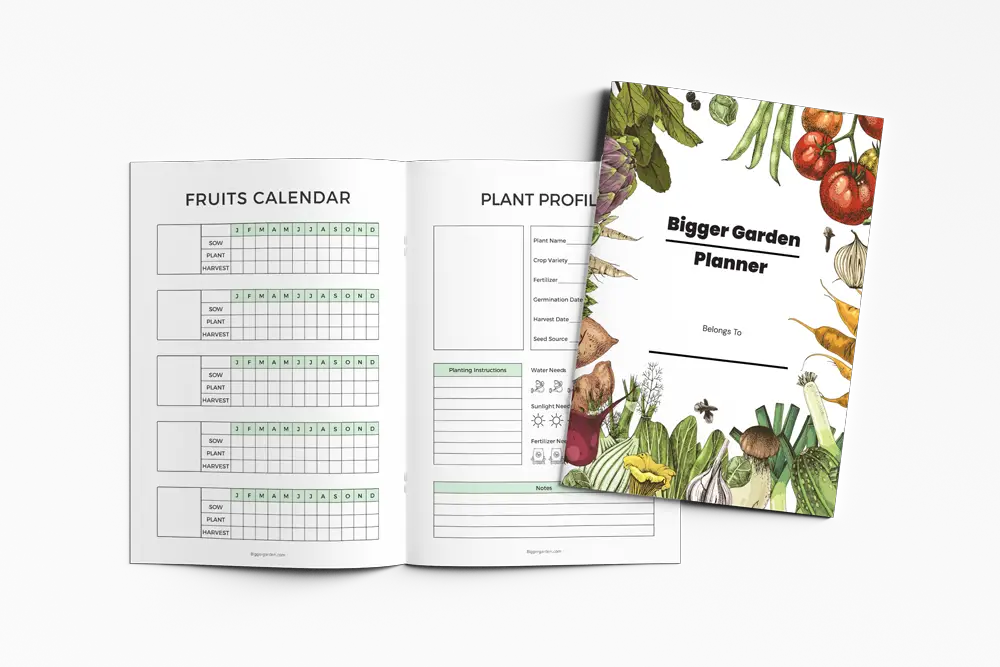12 revitalizing Flowers That Start with R for You to Grow This Year

This post follows our research editorial guidelines.

A garden ripping with flowers can be regal or rambunctious and rewarding. Successive waves of blossoms supply vital food for vulnerable bees, butterflies, and other pollinating insects. They recharge and rejuvenate with every pollinated flower, and my cucumbers and Watermelons would be fruitless without them.
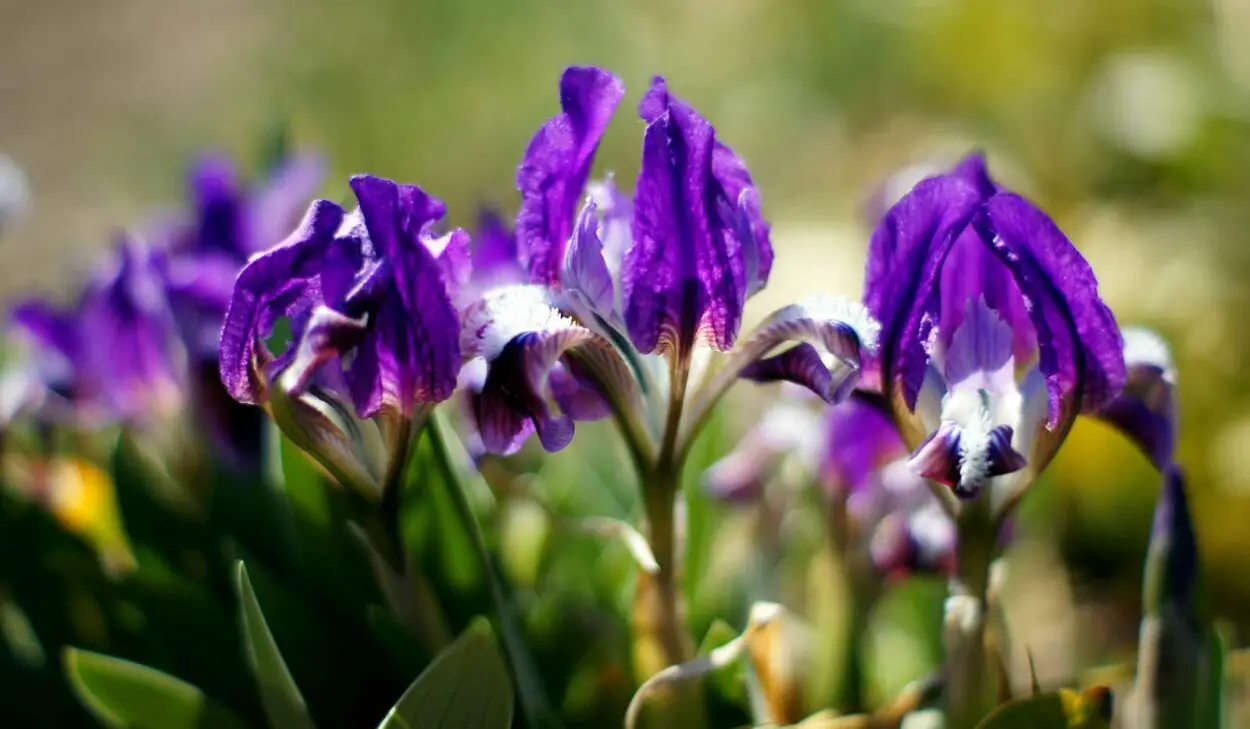
I’m working my way through all my favorite flowering plants, in alphabetical order, so let’s take a look at twelve of my most treasured plants that start with the letter R.
Quickly Find A Flower That Starts With The Letter R
1. Reticulated Iris (Iris reticulata)
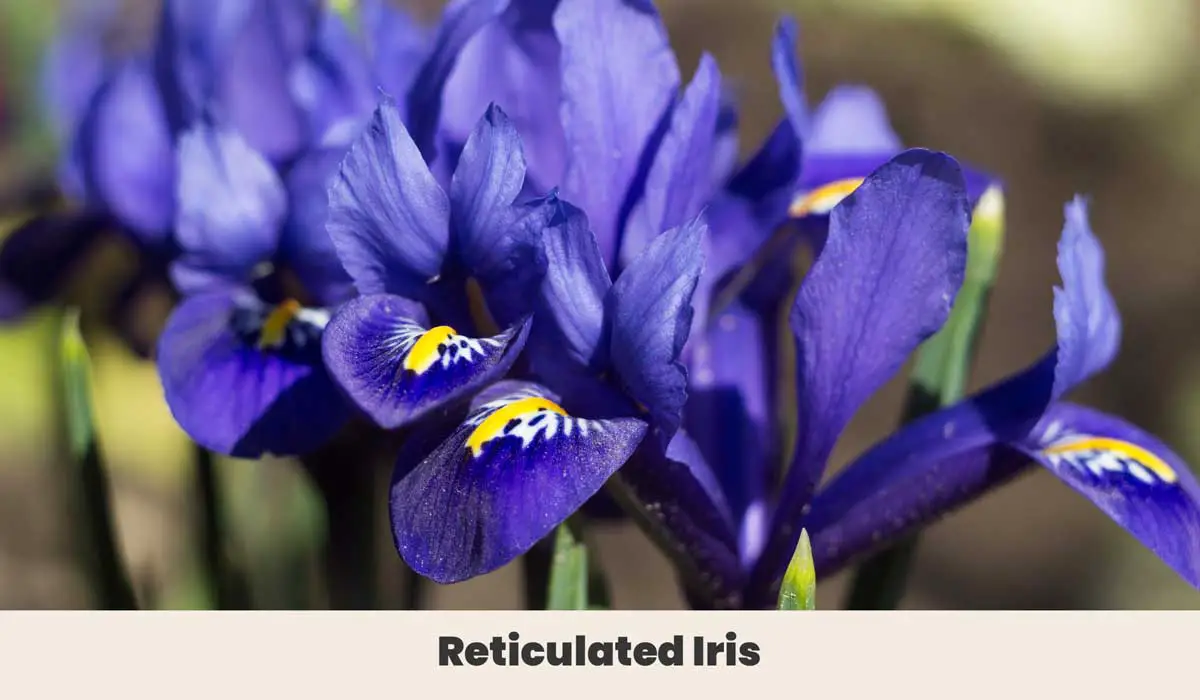
Also known as the Dwarf Iris or Netted Iris, the Reticulated Iris is a classic perennial bulb. It produces gorgeous purple and gold blooms with a distinctive pattern on the lower petal.
The name ‘iris’ comes from the Greek Goddess of the Rainbow, a messenger of spring. Plant them along borders or by ponds and let them herald the changing of the seasons.
| Botanical Name: | Iris reticulata |
| Growth Rate: | Fast growing annual |
| Native Range: | East Turkey to Iran |
| Hardiness Zones: | 5a to 9b |
| Soil Needs: | All types, moderately moist |
| Exposure: | Full sun to partial shade |
| Blooming Period: | Spring |
2. Rampion Bellflower (Campanula rapunculoides)
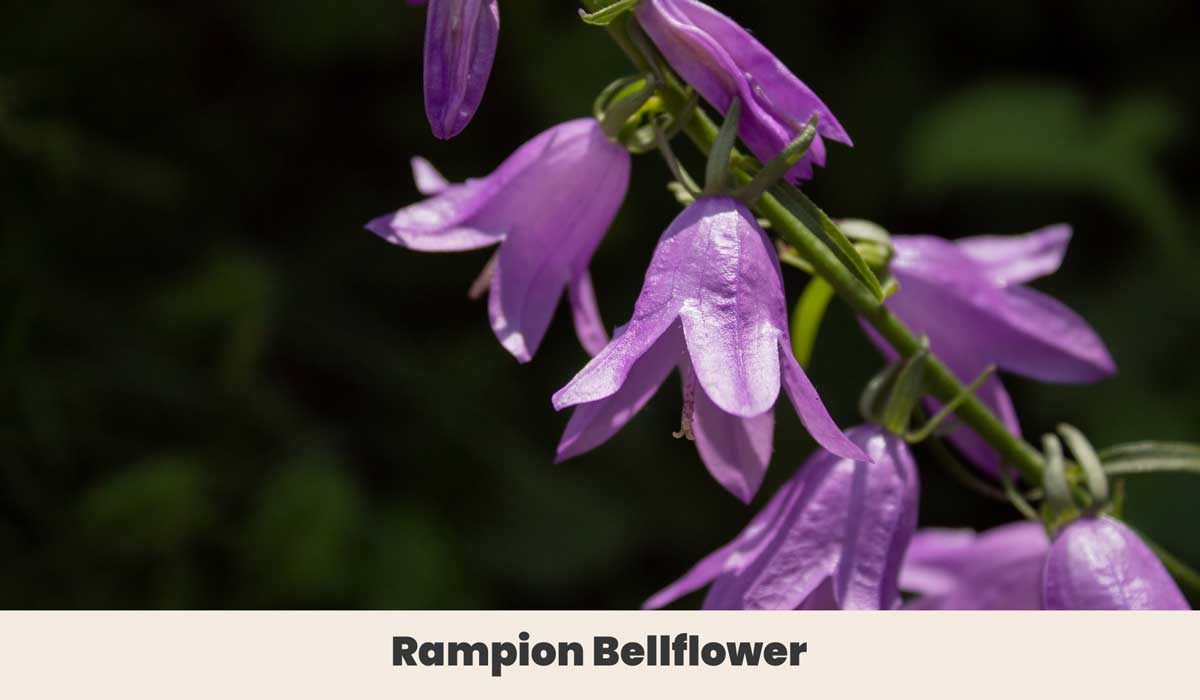
The Rampion Bellflower is a fast-growing perennial with inch-long bell-shaped flowers in soft shades of violet and mauve. It’s edible and was often grown across its native range for its nutritious leaves.
They’ll thrive in most conditions, but be warned – they’re an invasive weed in many parts of the United States. Check with your local extension before you plant in garden beds, or restrict this one to pots.
| Botanical Name: | Campanula rapunculoides |
| Growth Rate: | Fast |
| Native Range: | Eurasia |
| Hardiness Zones: | 3 to 7 |
| Soil Needs: | All types, moist well draining |
| Exposure: | Full sun to partial shade |
| Blooming Period: | Summer |
3. Red Campion (Silene dioica)
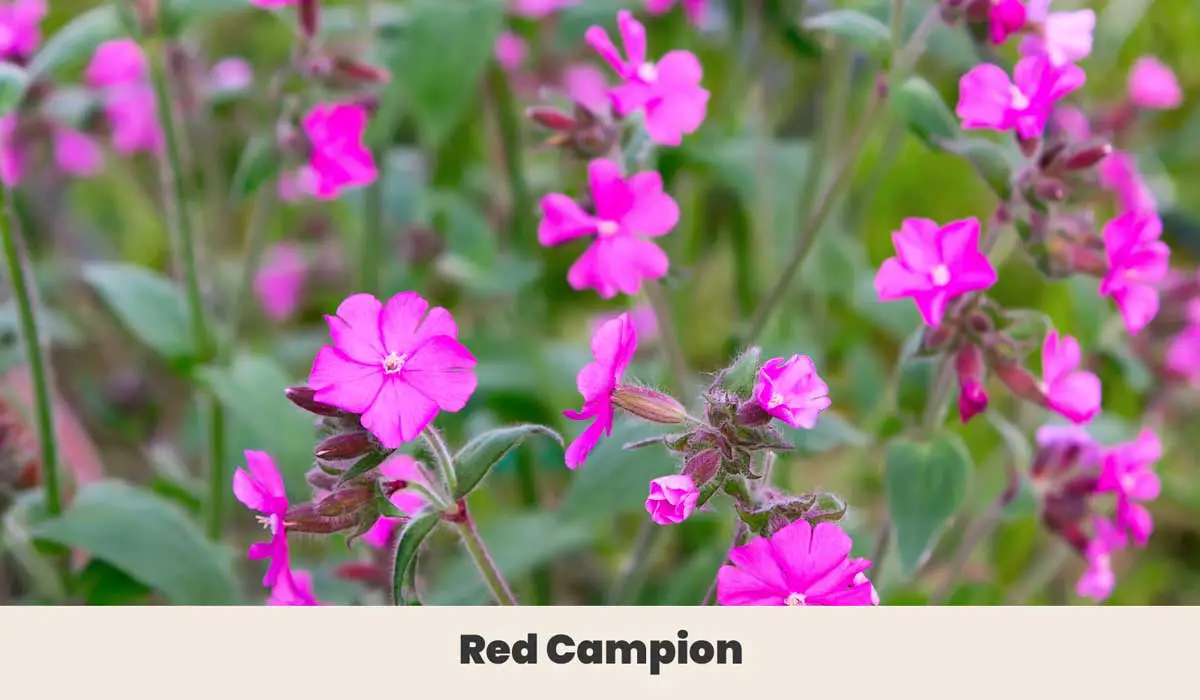
In shaded woodlands across Europe, Red Campion flowers are said to protect fairies and other magical creatures from discovery.
More commonly they encourage and support other little winged things, as their gorgeous purple and mauve flowers are a favorite food for bees, butterflies, and other beneficial insects.
| Botanical Name: | Silene dioica |
| Growth Rate: | Fast |
| Native Range: | Europe |
| Hardiness Zones: | 5 to 8 |
| Soil Needs: | All types except heavy clay, well draining |
| Exposure: | Full sun to partial shade |
| Blooming Period: | Spring and summer |
4. Red Valerian (Centranthus ruber)
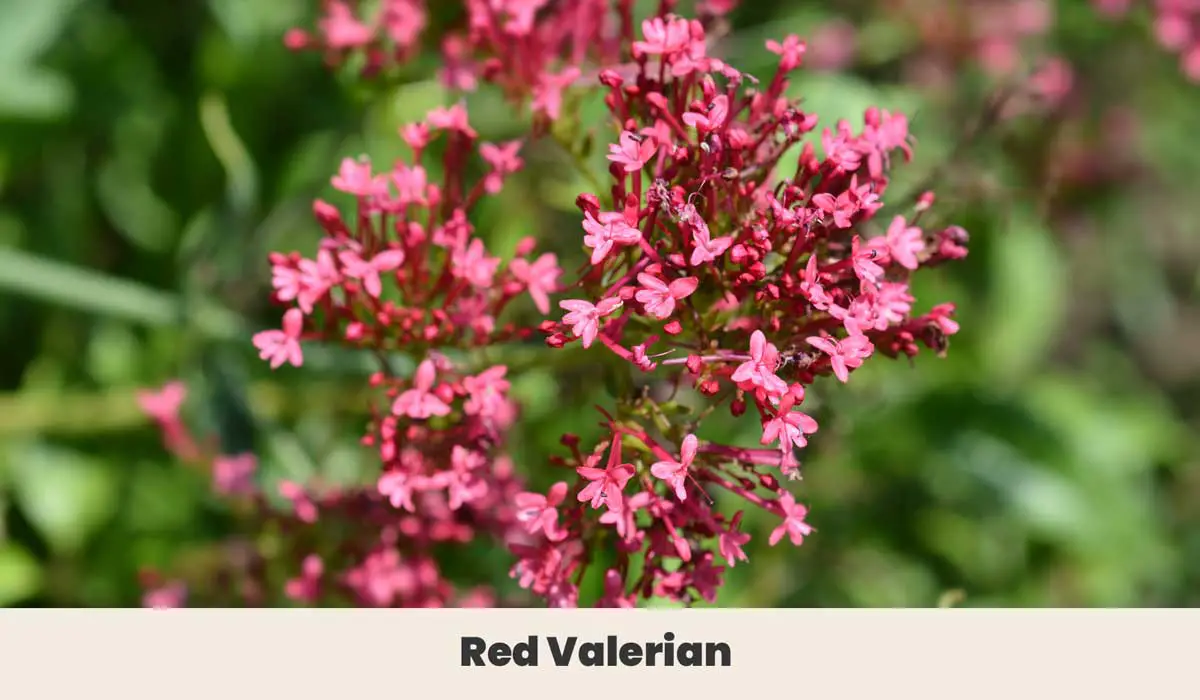
Also known as Jupiter’s Beard and the Keys of Heaven, Red Valerian is a massive pollinator draw-card in any garden. It produces dense flower heads bearing many small, star-shaped blooms that bees and butterflies adore.
They’re so easy to grow and tolerate such wide conditions that they can break out of gardens and become a pest, so be careful where you plant.
| Botanical Name: | Centranthus ruber |
| Growth Rate: | Medium |
| Native Range: | Mediterranean |
| Hardiness Zones: | 5 to 8 |
| Soil Needs: | All soil types prefer alkaline soil |
| Exposure: | Full sun to partial shade |
| Blooming Period: | Late spring through to early fall |
5. Regal geranium (Pelargonium × domesticum)
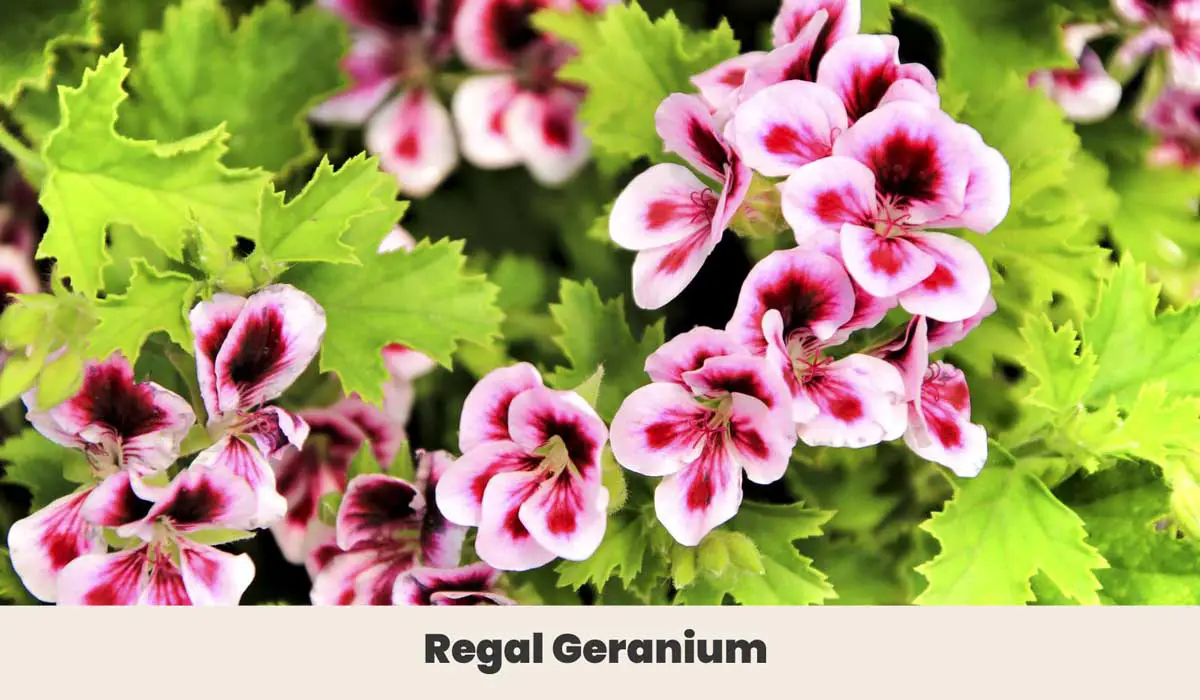
Regal geranium is a warm climate plant with flowers that range from pink or purple to variegated red and scarlet. They’re often grown indoors, but if you’re in a warmer part of the country they do just fine as an annual.
They are vigorous growers that will flower all summer long. Many enthusiasts take armloads of cuttings each fall to replant in the spring once the soil warms.
| Botanical Name: | Pelargonium × domesticum |
| Growth Rate: | Moderate |
| Native Range: | South Africa |
| Hardiness Zones: | 9 to 12 |
| Soil Needs: | Rich, loamy soil, well draining |
| Exposure: | Full to partial shade |
| Blooming Period: | Spring and summer |
6. Rocket Larkspur (Consolida ambigua)
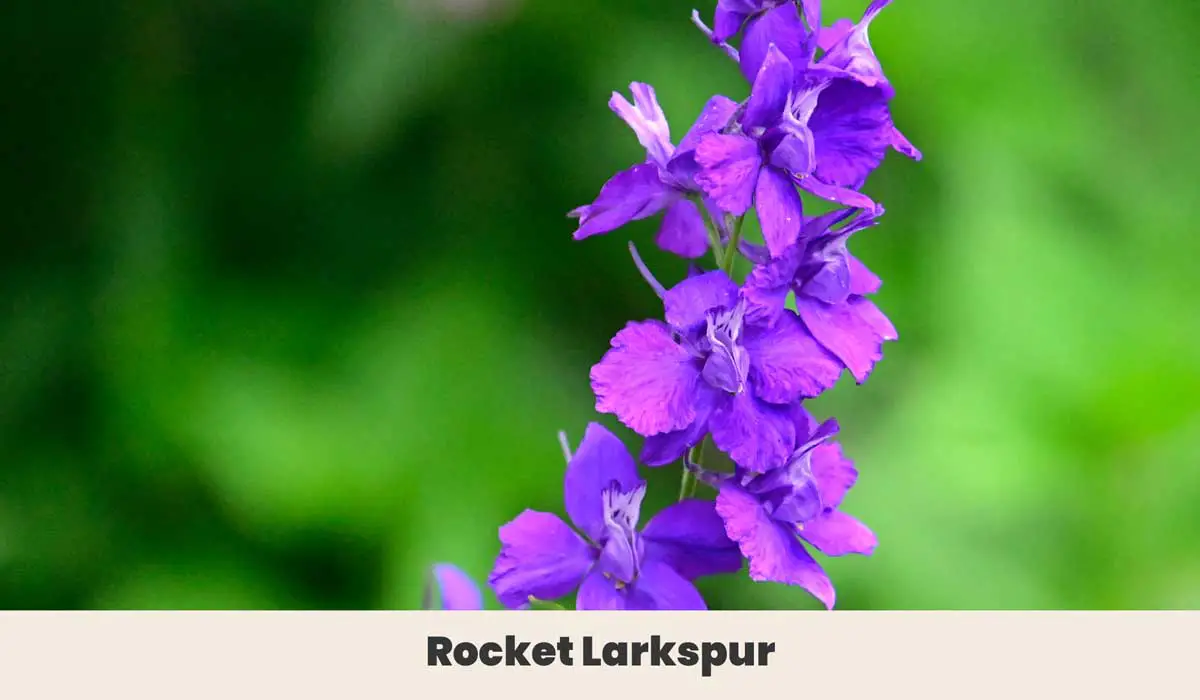
The Rocket Larkspur is a fast-growing annual known for spectacular mauve displays. Each spear of flowers is two to three inches across and a foot tall, and ranges in color from pale white to vivid violet.
The blooms are great additions to dried flower arrangements, allowing them to shine long after the flower itself dies.
| Botanical Name: | Consolida ambigua |
| Growth Rate: | Very fast |
| Native Range: | Mediterranean |
| Hardiness Zones: | 1-10 |
| Soil Needs: | All types, well draining |
| Exposure: | Full sun to shade |
| Blooming Period: | Summer |
7. Roof Iris (Iris tectorum)
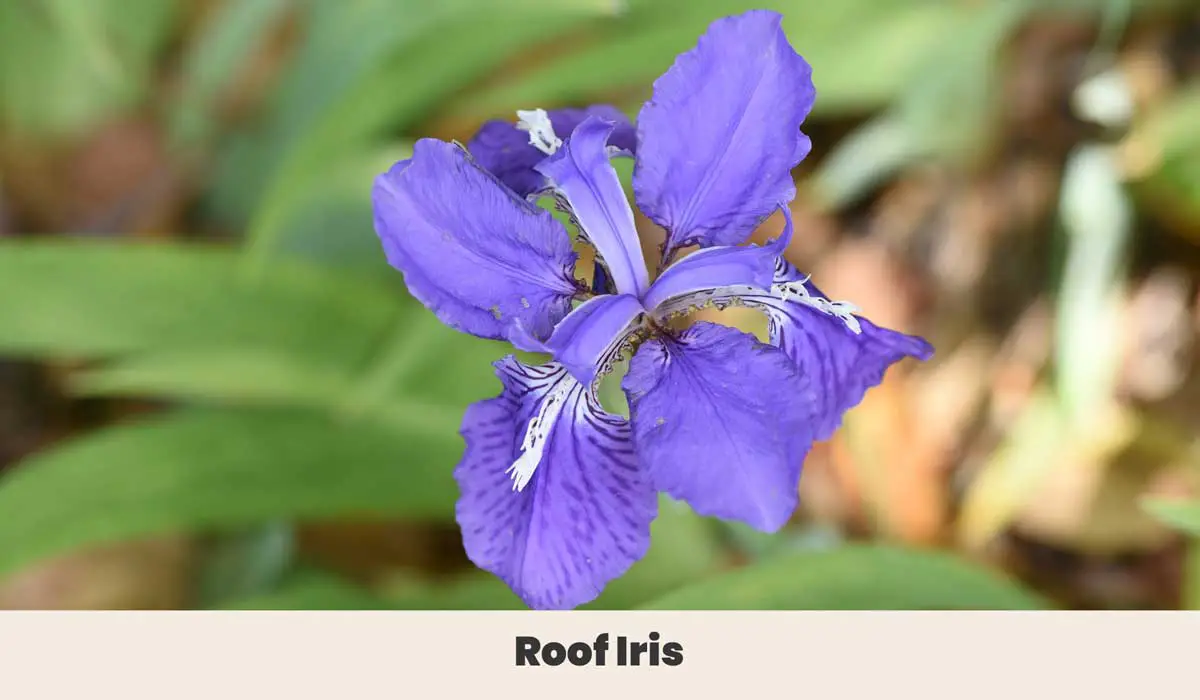
Also known as the Wall Iris or the Japanese Roof Iris, these low-maintenance perennial flowers will grow in an astonishing variety of locations. They were commonly planted in the thatch of rooftops in their native range as well as in Japan. The Roof Iris provides a pop of color anywhere from pond edges to rock gardens and more.
| Botanical Name: | Iris tectorum |
| Growth Rate: | Fast |
| Native Range: | Central and southwestern China, Myanmar |
| Hardiness Zones: | 4a to 9b |
| Soil Needs: | Rich, loamy soil |
| Exposure: | Full sun to partial shade |
| Blooming Period: | Spring |
8. Rue (Ruta graveolens)
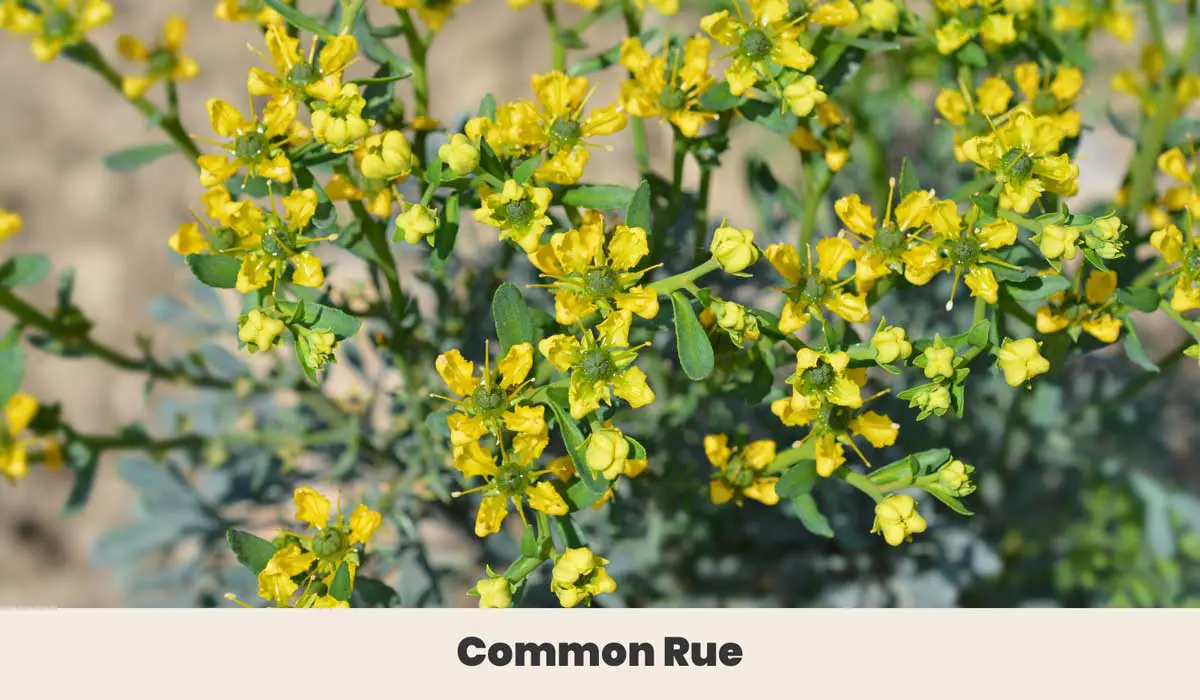
Rue is a herb with a long history as a medical plant, but it’s best used as a decorative feature. Its flowers are delicate golden blossoms that sprout in loose clusters, high above its gleaming blue-green leaves.
| Botanical Name: | Ruta graveolens |
| Growth Rate: | Medium |
| Native Range: | Southern Europe and Balkans |
| Hardiness Zones: | 4a to 10b |
| Soil Needs: | Southern Europe and the Balkans |
| Exposure: | Full sun |
| Blooming Period: | Summer to fall |
9. Rosinweed sunflower (Helianthus silphioides)
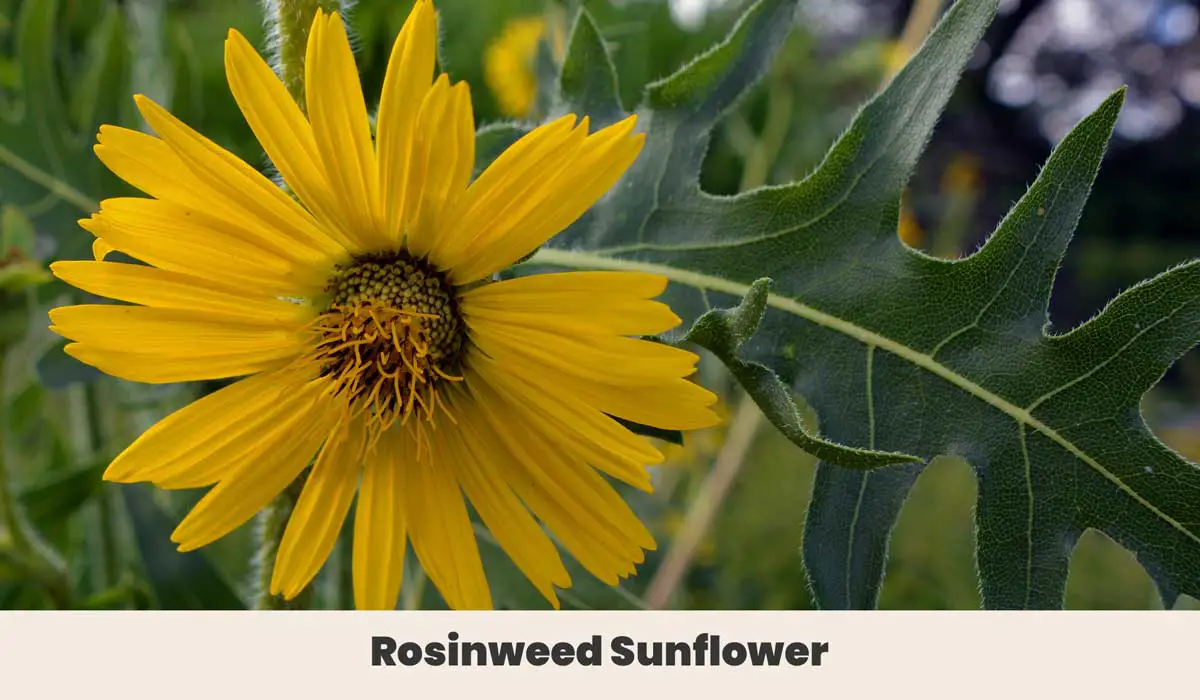
Nothing says summer like sunflowers, and these American natives deliver. Rosinweed sunflowers are a classic round daisy-like bloom with yellow rays around a purple heart. They can grow up to ten feet tall.
Individual plants usually need to be staked, lest their glorious blossoms drag the whole plant down.
| Botanical Name: | Helianthus silphioides |
| Growth Rate: | Fast |
| Native Range: | Southeastern and southcentral United States |
| Hardiness Zones: | 5 to 9 |
| Soil Needs: | All types tolerate sand and clay. |
| Exposure: | Full sun |
| Blooming Period: | Late summer to fall |
10. Redvein enkianthus (Enkianthus campanulatus)
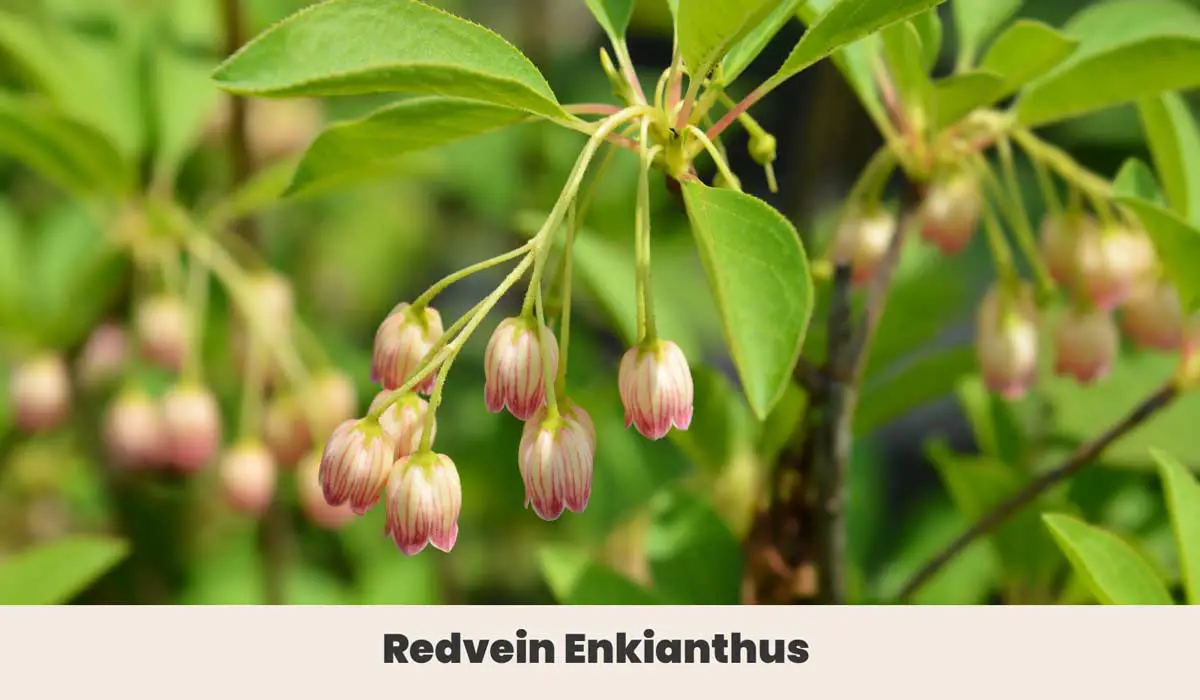
A close relative of blueberries, the Redvein dianthus is a show-stopper for most of the year. They grow lush bell-shaped flowers that range from pale cream to delicate pinks and mauve.
Once the flowers go however the real show begins – the whole shrub turns a rich scarlet with tones of orange, yellow, and violet.
| Botanical Name: | Enkianthus campanulatus |
| Growth Rate: | Moderate |
| Native Range: | Japan |
| Hardiness Zones: | 4a to 7b |
| Soil Needs: | Rich loam, moist well-draining soils including clay |
| Exposure: | Full sun to partial shade |
| Blooming Period: | Spring |
11. Ragged Robin (Silene flos-cuculi)
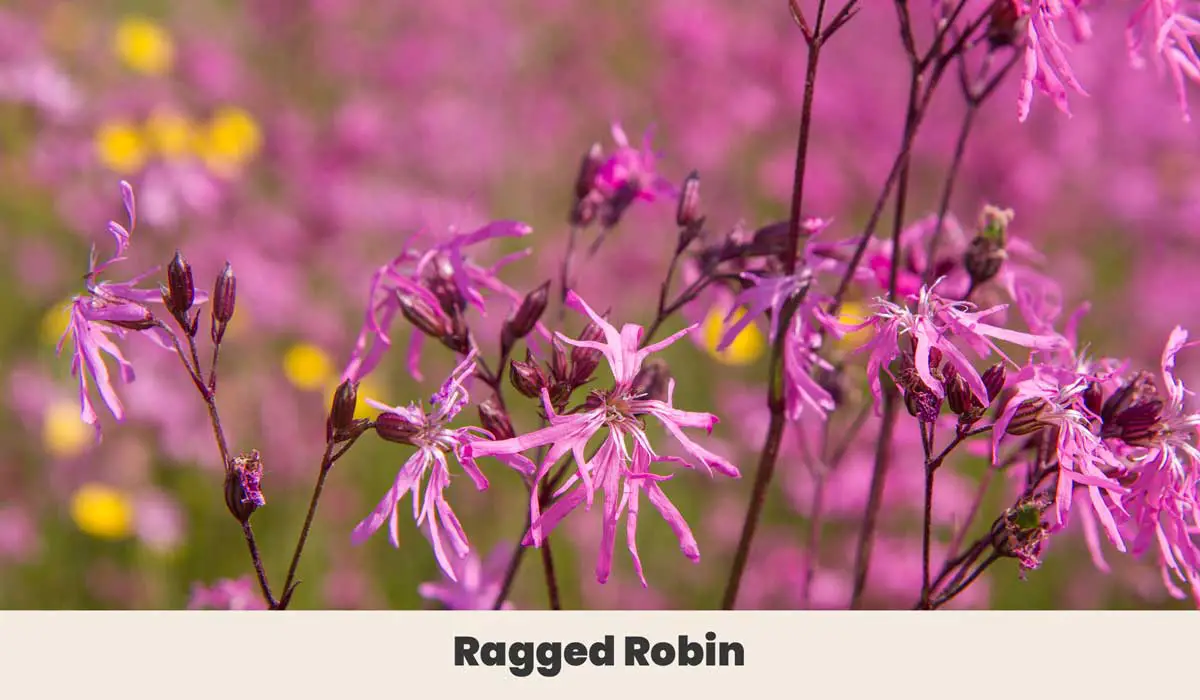
Ragged Robin is a charming wildflower and a real personal favorite. They’re native to Ireland where they’re known as Lus síoda. There they grow in boggy marshes and wetlands and are loved by bees and butterflies.
Their flowers are almost star-like, a gorgeous fuchsia pink with ragged, uneven petals. Pop them in a soggy corner and marvel at all the beautiful visitors they attract.
| Botanical Name: | Silene flos-cuculi |
| Growth Rate: | Moderate |
| Native Range: | Europe, especially Great Britain and Ireland |
| Hardiness Zones: | 5 to 8 |
| Soil Needs: | Moist to boggy soil, loam, clay |
| Exposure: | Full sun to partial shade |
| Blooming Period: | Spring to summer |
12. Rodgersia (Rodgersia pinnata)
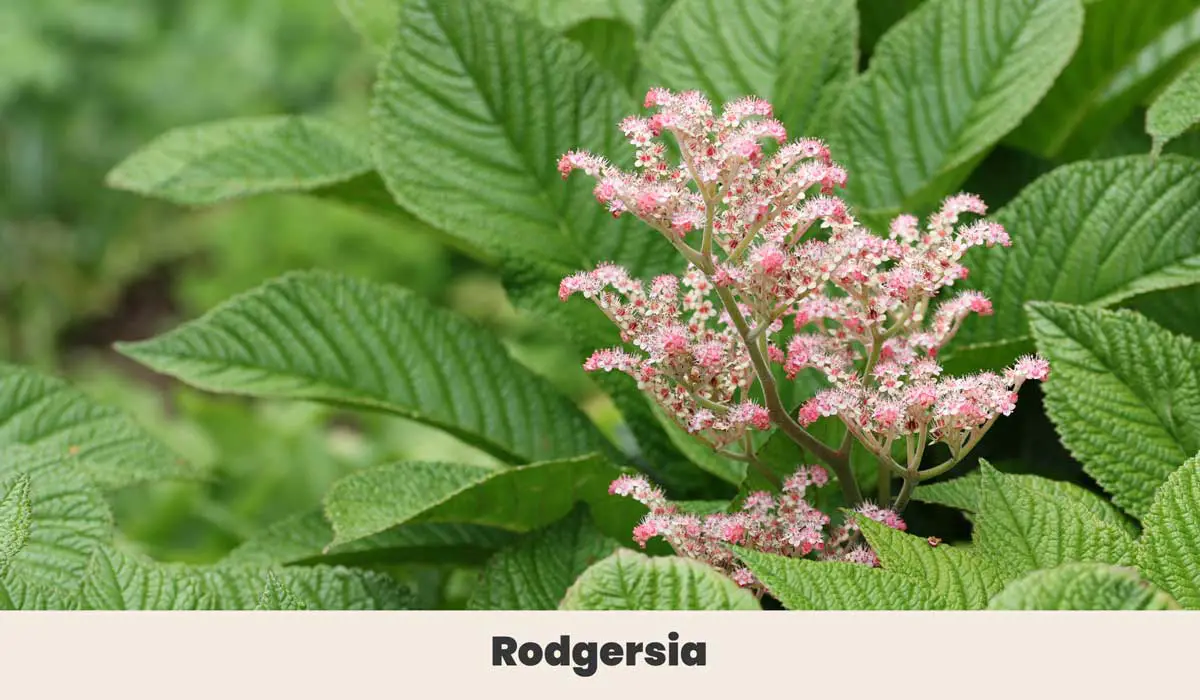
For wet, shaded areas of the garden, it’s hard to go past Rodgersia. This elegant shrub is a tall pink perennial that reaches a height and breadth of around four feet (1.2m).
Flowers appear in delicate frothy clusters and range from pale cream to deep pinks. They make for a spectacular display when planted en mass or in groups, as their foliage turns a gorgeous rich bronze towards the end of summer.
| Botanical Name: | Rodgersia pinnata |
| Growth Rate: | Moderate to slow |
| Native Range: | Southwestern China |
| Hardiness Zones: | 5 to 7 |
| Soil Needs: | Well draining moist to boggy loamy soils |
| Exposure: | Full sun to partial shade |
| Blooming Period: | Late spring and early summer |
Final thoughts
Rich resplendent flowers reveal the radiance of the natural world. Not only are they ravishing in their beauty, but their very presence brings reward. Even practically-minded vegetable gardeners benefit from flowering plants, so it pays to remember the garden’s hardest workers!
